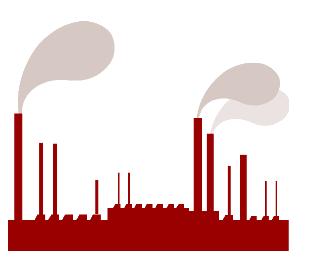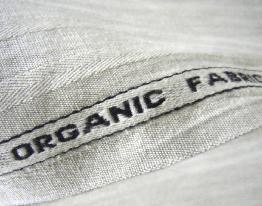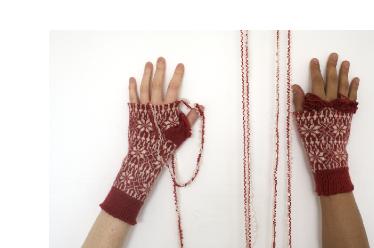 |
 |
 |
||
Wool is, or fundamentally should be an ecologically and ethically sound product, as it is a renewable and naturally grown fibre, however due to the increase in production and desire for consistency of quality, together with the drive for maximum return on investment will mean that some aspects of the farming and fibre production of wool are not ecologically or ethically desirable. The use of pesticides is an issue in the production of wool, and poor management of the chemicals used to control parasite infection have led to incidences of water pollution and direct harm to the health of farmers. Highly toxic organophosphates, have been linked to nerve damage in humans, and were used until recently in the U.K to treat sheep scab. The replacement dips, using pyrethoids have also been suspended from sale, because they were found to be 1000 times more toxic to aquatic life than organophosphates, and linked to the increase in water pollution.
After the sheep are sheared, the fleece needs wet cleaning with hot water to emulsify the wool grease, and the resulting sludge disposal is a potential pollutant. Often harsh toxic chemicals are used to clean the wool as well as bleaching agents to whiten the wool during and after scouring. Wooltech’s wool cleaning system uses the solvent trichloroethelene in place of water, however the reclamation and recycling of solvents need to be assured in order to have sustainability benefits.
Wool processing: The best lambs’ wool is obtained from the first shearing. Prior to the spinning process the wool is separated and graded into different classification categories or wool classes. The diameter of the fibre is measured in microns, and this measurement is the principal component to determine the classification category. Grading is also dependent on the breed of sheep and also the end purpose of the wool. The finer the wool count, the softer it is to the touch. The finished fabrics are either called woollens or worsteds depending on which spinning processes were used to create the yarn. Shearing: The fleece is removed in one piece with hand blades or electric clippers. Scouring: The fleece is washed with water or solvents to remove dirt, debris and wool grease. Carding: Rolling with a roller that is covered with teeth to tease apart the staples of wool, laying the fibres nearly parallel to form a soft rope called a sliver. Combing: Combing separates the short fibres from long fibres, and this process ensures that the long fibres are laid parallel in order to produce worsted wool. Drawing: The drawing out of fibre tops into the thickness of one, to thoroughly blend the wool and ensure evenness or regularity of the resulting roving. Finisher drawing: A final drawing to reduce the roving thickness to suit the spinning operation and further improve evenness. Spinning: Inserting a twist into the yarn to give strength to the finished yarn.
Worsteds tend to be smoother and are perfect for fine tailoring, woollens are generally coarser and tend to have great tactile qualities. Woollens: Is a general term describing various fabrics woven from woollen yarn that is spun from the shorter wool fibres. These shorter fibres are not combed to lie flat, as in the worsted yarn. It is the shorter fibres that lie in several different directions and stand up from the surface and give the fabric a ‘fuzzy’ or ‘hairy’ touch. This results in soft surface textures and finishes to the fabric. Worsteds: Is a general term for fabrics woven from worsted yarns that contain longer fibres spun from combed wool. Worsted wool refers to tightly woven, smooth, finished fabrics in a variety of twill and other stronger weaves. Worsted fabrics are often more expensive than wool spun products due to the longer raw material to yarn processing route used. Worsted fabric is generally stronger and wears better than a woollen spun fabric of equivalent weave construction and fabric weight. Worsted fabrics are preferred for trousers and suitings where a smooth finish is required.
Organic sheep are reared, fed, sheltered and transported with consideration for their wellbeing. Cruel practices are prohibited and animal stress is minimized. Organic farmers take a preventative approach to disease, so the animals are not routinely treated with antibiotics, wormers or pesticides. Organic animals are reared on organic feed and grazed on organic land, and are free to pursue their natural behaviour with plenty of space to roam. Organic standards ensure that the chemicals used in processing textiles meet strict requirements on toxicity and biodegreadability, and that the textile manufacturers also have a waste water treatment plant and a sound environmental policy. Isle of Mull Weavers and Cornish Organic wool produce certified organic wool in the U.K. According to the International Wool Textile Organisation (IWTO) there are three categories for classifying eco wool and three for classifying organic wool, the purpose of which is for clarification at retail and consumer level. Eco wool: Organically grown wool Eco wool products: Organic wool product Eco wool containing products: Organic wool containing product
Local Wool Sheep are a natural resource in the UK, which has over 60 breeds. Organic wool comes from farms that put the sheep and the environment first. Laxtons produce fully traceable British wool with a minimal carbon footprint. Ardlanish Weavers produce naturally dyed tweeds powered by water and solar energy. Holland and Sherry are producing fine wools and worsteds from the only Merino flock in the UK in Scotland.
Recycled Wool The Recycling of wool has always been a part of the wool industry’s production life cycle. Old wool (often post consumer waste), textiles are shredded into shoddy. The resulting fibres are then blended with raw wool or other selected fibres. This is done to increase the average length of the recycled fibre, as the tearing process involved in its recovery tends to result in shorter fibres which makes re-spinning and weaving difficult. Recycled wool is often used as weft yarns on products that have cotton warps. |
WOOL
 PROCESSING
PROCESSING

 Organic wool
Organic wool
